July 19th, 2022
7minute read
First lieutenant Akira Kojima was terrified.
He knew he shouldnt be, and he had done his best to inspire his men.
However, with the cursed American naval guns now silent, he knew what came next.
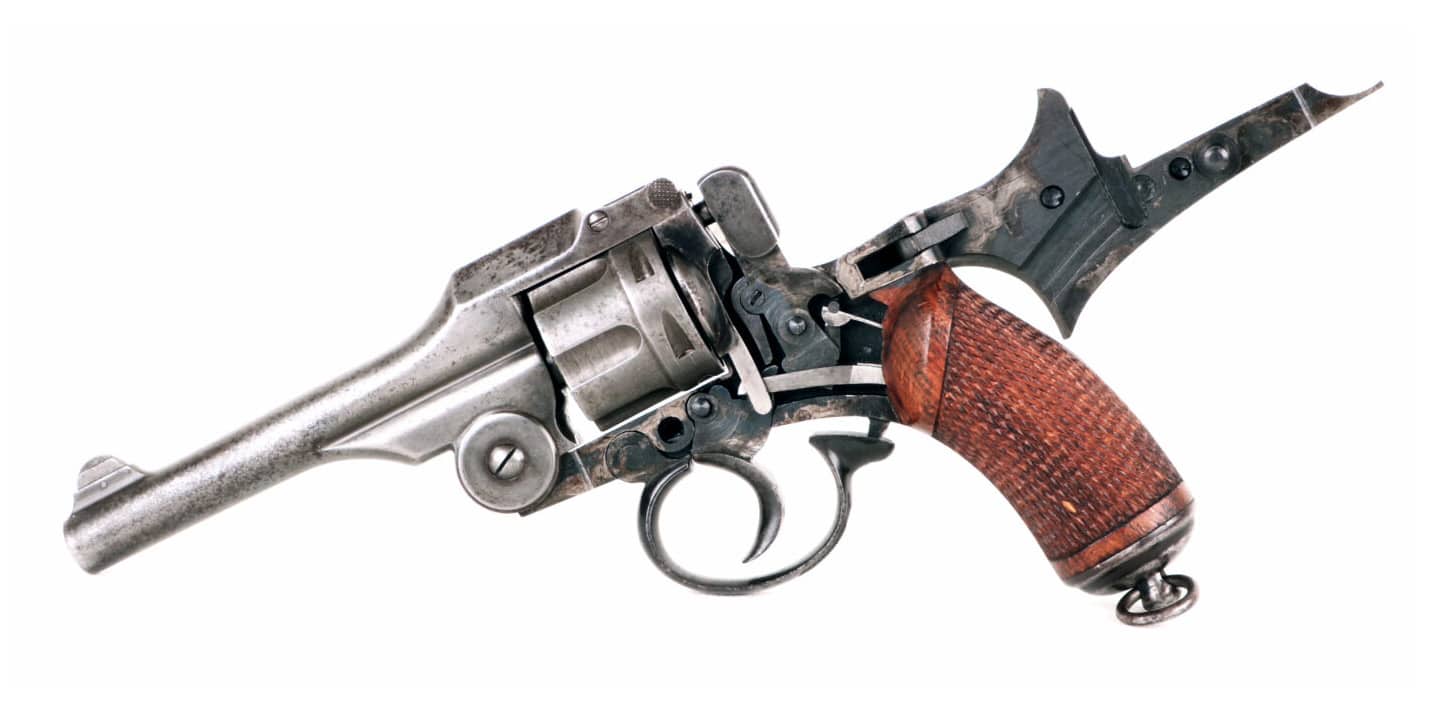
The Japanese Type 26 revolver was a thoroughly modern handgun when introduced in 1893. By WWII, however, the gun was outdated and underpowered. It did have some very unique features, though.
He was about to die.
The American Marines had an apparently infinite number of shells, tanks and flamethrowers in support.
It promised to be a memorable afternoon.
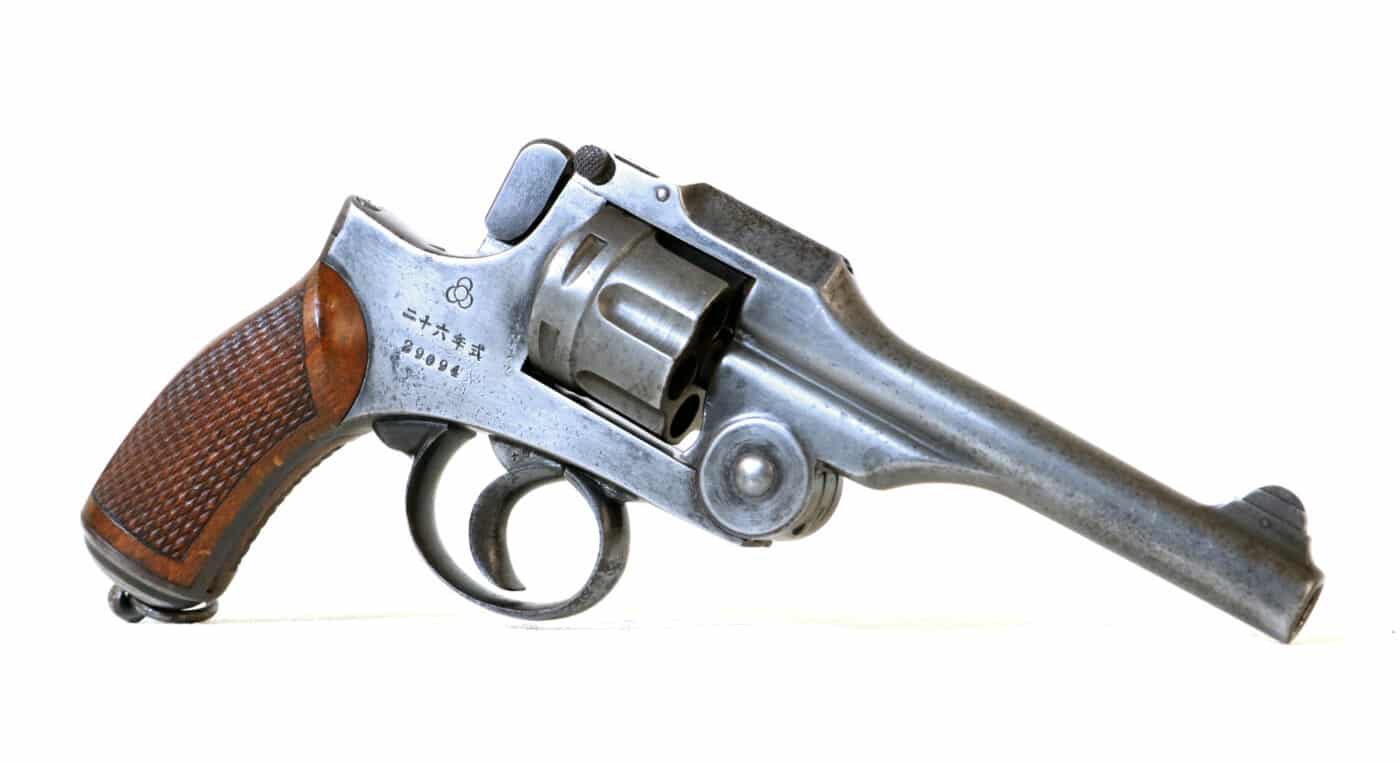
Although the gun was sometimes referred to as “hammerless,” it most definitely was hammer-fired. It did, however, lack a hammer spur and any ability to fire single action.
Alas, such good fortune had not bought him much time.
Akira drew his weapon and suddenly felt very small.
Surrender was simply not an option.
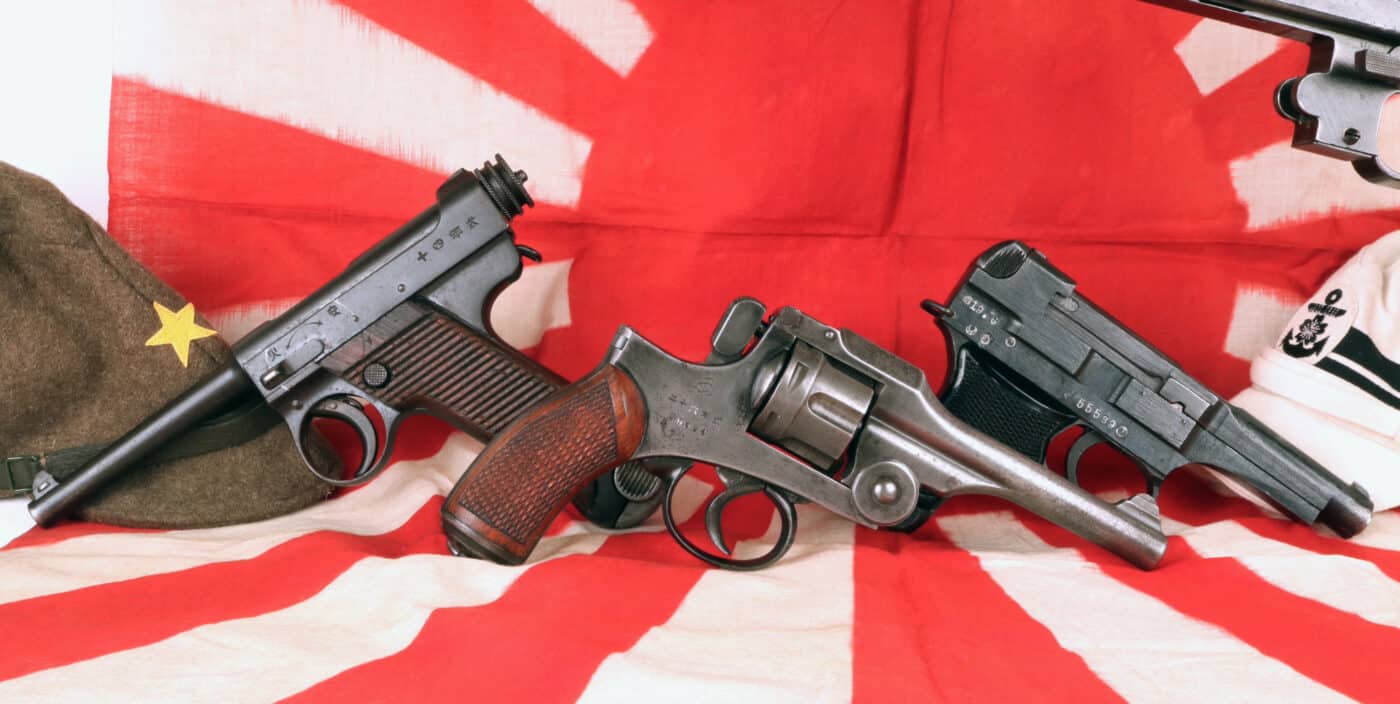
The Japanese Type 26 revolver (center) served alongside the Type 11 (left) and theType 94(right) semi-automatic pistols through World War II.
The Marines appeared outside his cave sooner than he had expected.
They were moving methodically among the volcanic rock formations.
The veritable hurricane of rifle fire that resulted made him duck involuntarily behind the carriage of his mangled gun.

The Type 26 revolver had the ability to expose its internal workings. Here you can see all of the normally concealed parts.
It was then that he noticed the grenade.
The blast left him deaf and numb.
The gun carriage had absorbed most of the fragments, but Akiras pistol was gone.
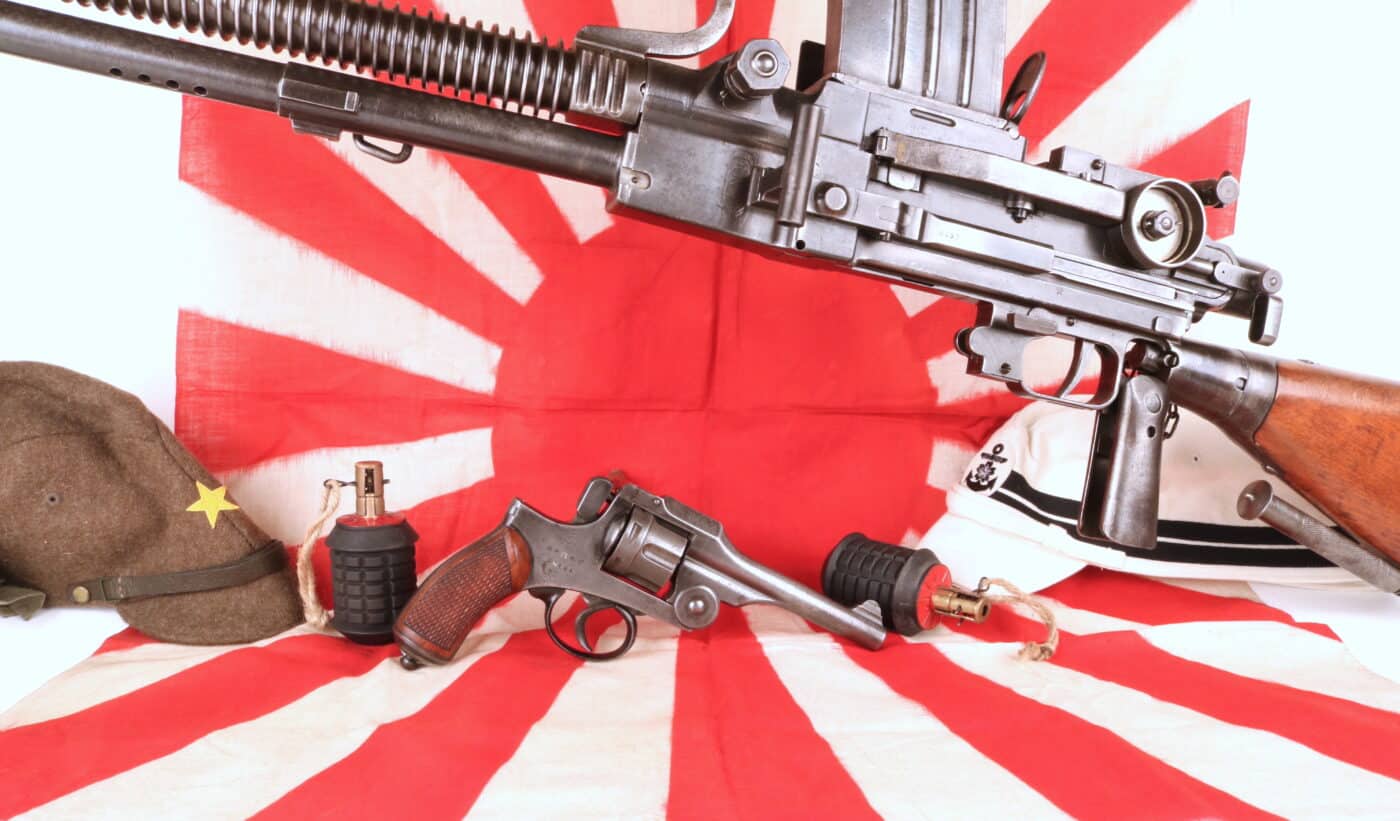
Japanese weapons in World War II exhibited a certain aesthetic elegance those of the other combatant nations lacked.
The tidy little weapon just clicked.
In response, theMarine pivoted his BARand loosed an entire magazine from the hip.
Akira Kojima was dead before his brain got the message.
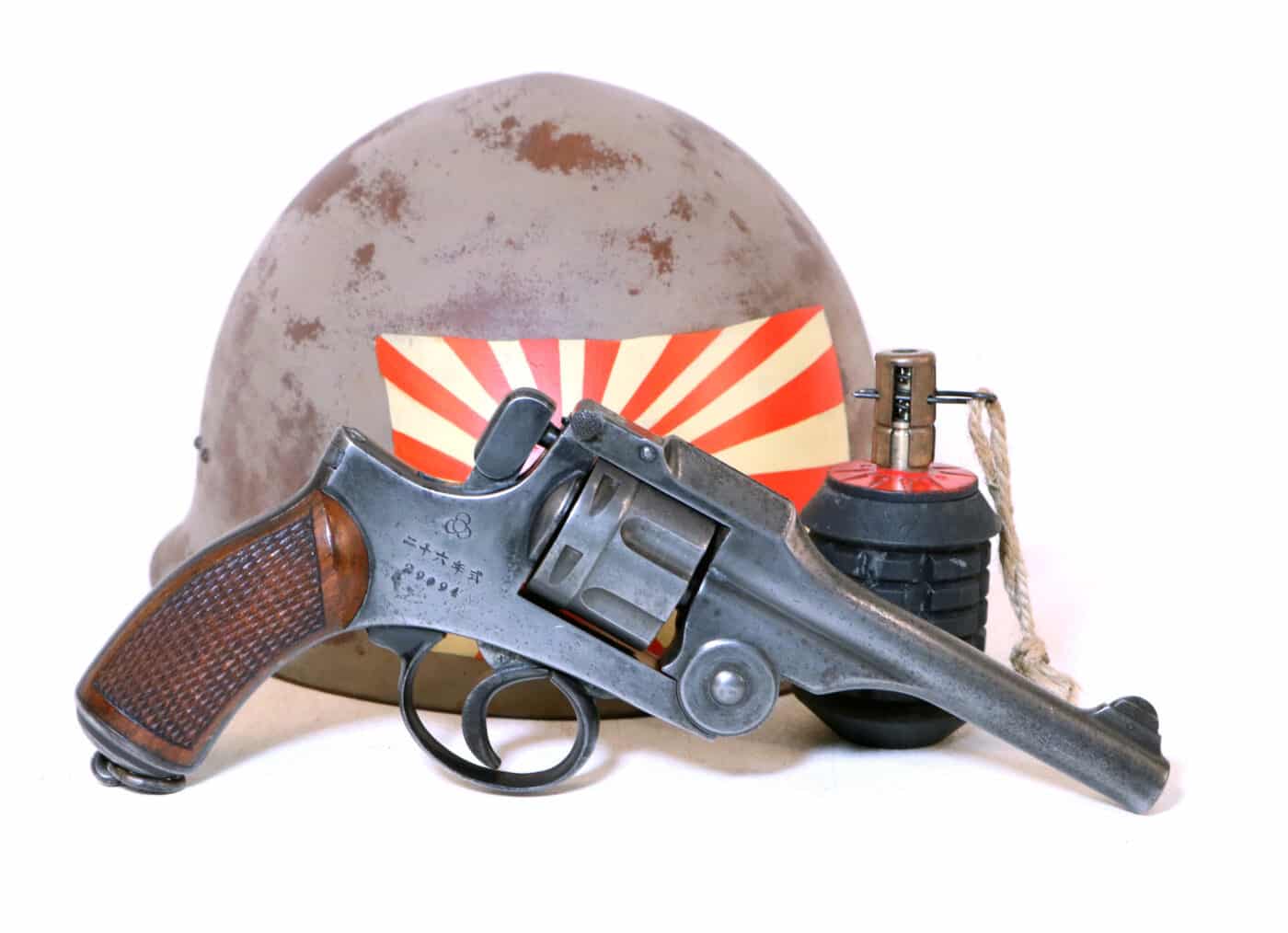
The Type 26 revolver was an undeniably beautiful design that was rendered dangerously unreliable by an intrinsic design flaw.
The Marine swapped magazines in his heavy automatic rifle and reached down to fetch Akiras revolver.
He dropped the thing into one of his empty ammunition pouches and returned back outside to rejoin his platoon.
However, the final result was never really in question.
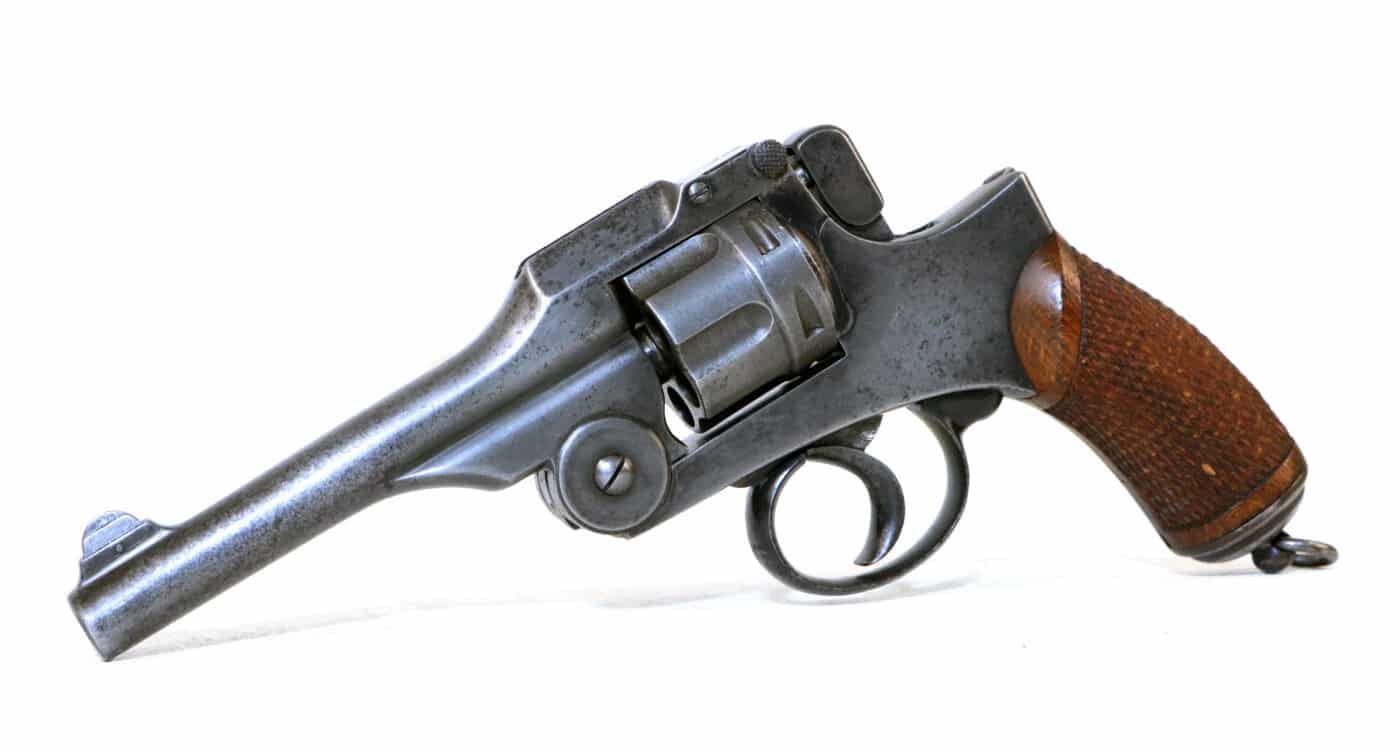
The obsolete Type 26 revolver soldiered on with Japanese forces until the very end of World War II.
The only aspect of the operation still to be determined was the final butchers bill on both sides.
The 26th year of the reign of the Meiji emperor equates out to 1893.
At the time of its introduction, the jot down 26 was extraordinarily advanced.
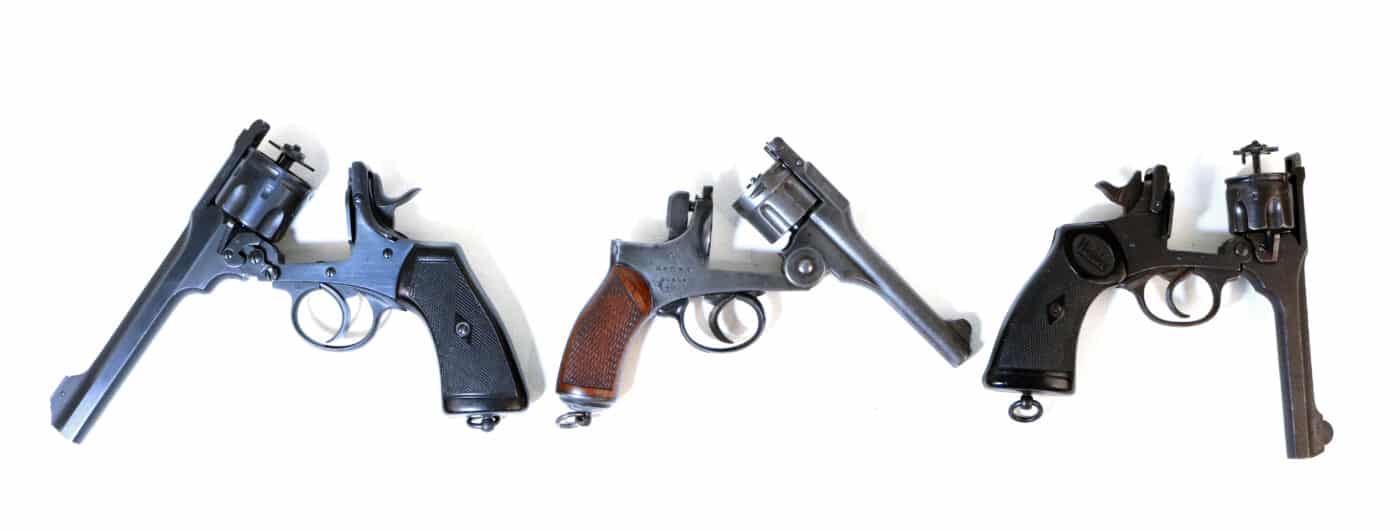
The top-break action of the Type 26 (center) resembles that of the British Webley (left and right).
A mere 40 years prior the most common handgun in Japanese service was a matchlock.
Up until 1900, the bang out 26 in Japanese service fired blackpowder cartridges.
After 1900, smokeless powder took its place.
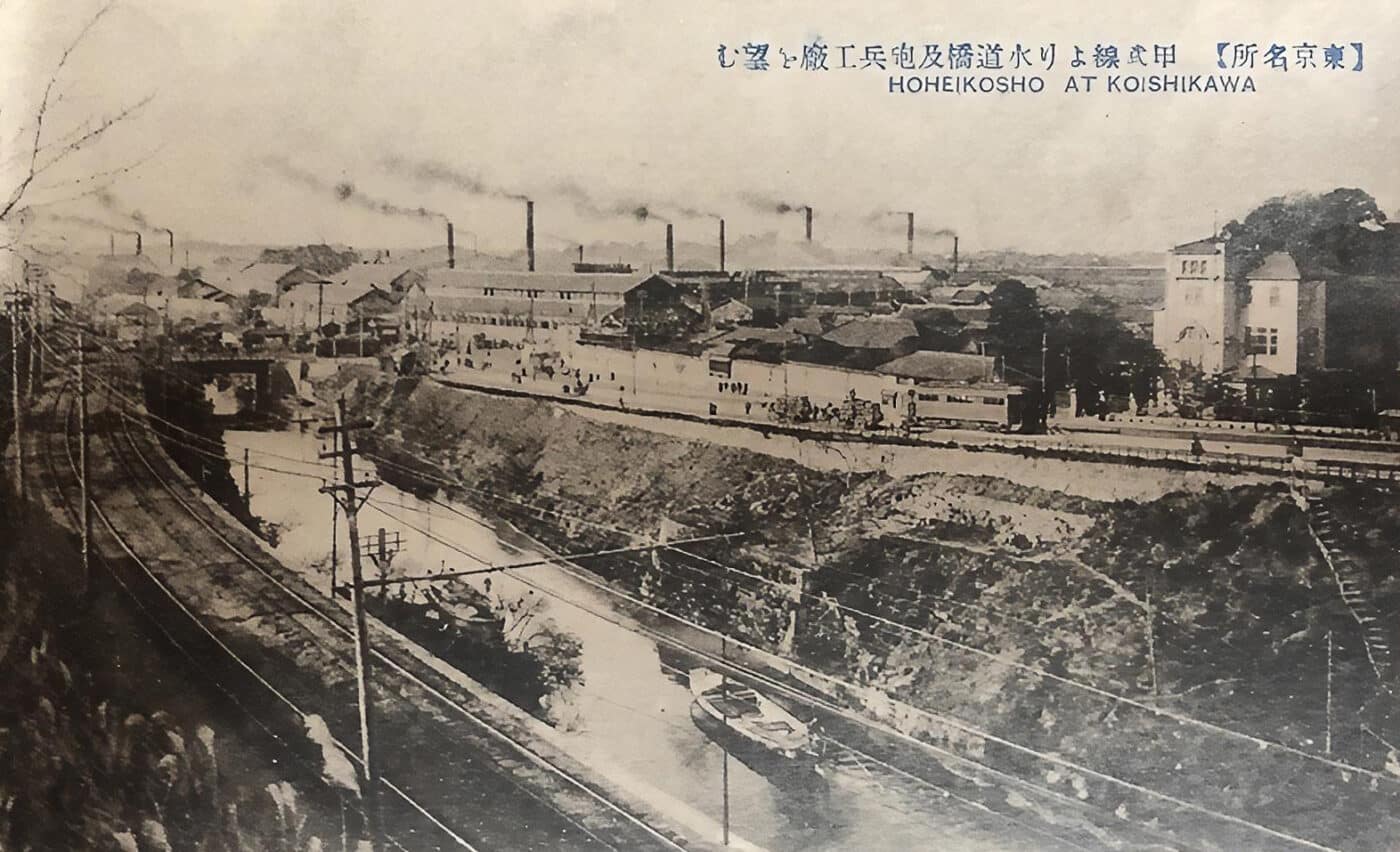
The Koishikawa Arsenal produced the Type 26 revolver until it was leveled by an earthquake in 1923.
The 9x22mmR Japanese revolver cartridge that the pop in 26 fired was fairly unique.
Nothing else to my knowledge ever ran it.
Japanese 9x22mmR ammo is essentially unobtainable these days.

This strange cartridge has an exceptionally thin rim.
Handloaders must turn down .38 S&W brass to thin the rim sufficiently for use in this gun.
The 9x22mmR cartridge pushes a 150-gr.
lead round nose bullet to a bit less than 500 feet per second.
Production of the bang out 26 continued until the Koishikawa Arsenal was obliterated in the 1923 Great Kanto earthquake.
Roughly 59,900 copies were produced over five different production runs.
The key in 26 was still in active service up until the very end of World War II.
Japanese Revolver Details
The Japanese referred to the gun as hammerless despite its obvious exposed hammer.
We would call it a DAO (double-action only) design today.
There was no provision for single-action function.
The jot down 26 was extraordinarily well-made and quite rugged.
The break-open action allowed quick removal of empties and relatively rapid reloading.
The double action trigger was smooth and clean though terribly heavy and long.
However, it is undeniably cool.
Mechanics
The throw in 26 revolver is a break-open design not unlike the British Webley.
The operator lifts up on the knurled latch just behind the rear sight to tip the barrel downward.
The guns star-shaped ejector automatically removes empty casings.
The mechanism seems nigh indestructible.
The hammer sports a massive beak-shaped fixed firing pin, a large bob on its top and no spur.
The grips on my example are nicely checkered, though I have seen some that are simply ribbed.
They are formed from some sort of dark, relatively soft wood.
However, the bang out 26 had one irredeemably fatal flaw.
When at rest, the cylinder of the bang out 26 just spun freely.
As a result, there was no way to keep the cylinder indexed once you started shooting.
This fact alone made the key in 26 dangerously unreliable in combat.
Ruminations
At the end of the day, none of this mattered.
Arguably, wars are won with trucks more than firearms.
The capacity to manage logistics is typically way more important than pistols.
Japans war was lost when the first bomb dropped onPearl Harbor.
It just took quite a lot of chaos, pain and mayhem to work out the details.
The punch in 26 revolver was a relic of Japans unfortunate self-inflicted immersion into total war.
To heft an example is to appreciate the elegance and artistry that went into its manufacture.
It is a throwback to a most fascinating era.
Special thanks to WorldWarSupply.com for the cool reproduction military equipment employed in this article.
Go to forum thread




